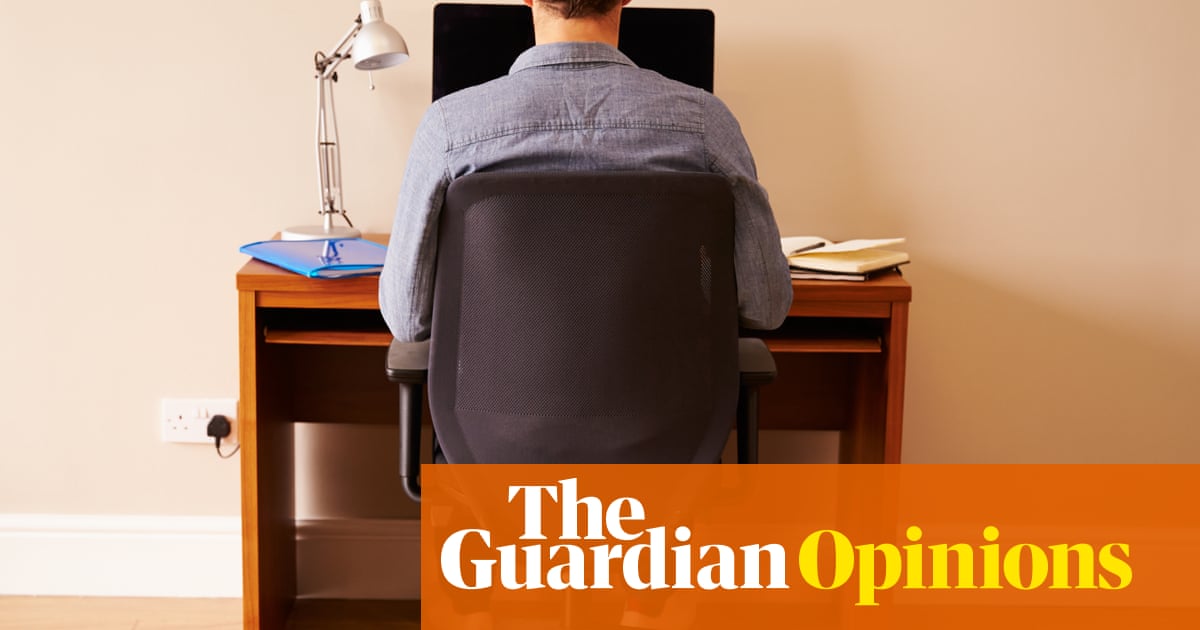I’m wary of gendered generalisations. They rightly raise hackles: we are unique, not defined by gender, not all men! But I was struck by one I read from Ella Risbridgerin her reviewof Jessica Stanley’s recent novel, Consider Yourself Kissed. Exploring one of its themes, Risbridger wrote: “I have long noticed that in a house with one spare room and a heterosexual couple who both work from home, the spare room is where he works – with a door that shuts and perhaps even a designated desk – and she workssomewhere else. (Always for good reasons, butalways.)”
This stopped me in my tracks. Not because it’s my experience: my husband and I are lucky enough to have an office each, and mine is bigger and objectively nicer. I get the garden view; he has the ballet of Openreach and Amazon vans. (See – not all men.) It’s not Stanley’s experience either: she uses the spare bedroom; her husband has half the living room, she toldthe Cut’s Book Gossip newsletter.
Rather, I was struck because having just read the Australian writer Helen Garner’s recently published diaries, How to End a Story, this is exactly the irreconcilable, constantly rehashed point of contention between her and her ex-husband, anonymised in the diaries as “V”.
V, also a writer, insists not only on appropriating the available room in their shared apartment for his office, but on Garner leaving while he works, her presence incompatible with his sacred need for silent isolation. Garner describes the quotidian pain of this situation (she wants to potter, play music, cook, see friends; her creativity is fuelled by these ordinary kinds of life), and the growing realisation of what it said about their relationship with shocking, powerful eloquence. V is aware of, but apparently unmoved by, her distress. They argue about it regularly.
Garner’s experience was so egregious as to be eye-poppingly enraging, but this happens more often in quieter, easier-to-overlook ways. I read and enjoyed Consider Yourself Kissed too – it’s a romance, but it also subtly builds a picture of the insidious sidelining of women’s work as expressed through domestic space. Set between 2013 and 2023, it’s particularly good on how this was amplified by Covid: the heroine’s political journalist husband sees his career go stratospheric and their spare room “somehow” becomes his study. He’s a nice man; he loves her; it just … happens.
This rang true because it is: it did just happen. Structural pay equalities meant men – habitually the higher earners – staked the more obvious primary claim on working space in locked-down homes. Research shows women experiencedmore non-work interruptions, compounded when they didn’t have a “dedicated unshared workspace” – their emotional wellbeing suffered, but so did their professional lives. “My husband locks the room from the inside when he needs to concentrate,” a participant in anIndian study on pandemic working habitsreported. “I don’t have that liberty. I have no room of my own.”
In 1929, Virginia Woolf wrote A Room of One’s Own as a riposte to the physical and economic exclusion of women from intellectual and professional spaces. In 2025, they can’t bar us from libraries, but intimate domestic spaces have proved stubbornly intractable. Back when men had inviolable studies and smoking rooms, there was an assumption that the domestic sphere was feminine, so they “needed” to escape the noise and mess of childrearing and homemaking. Now we’re ostensibly all in it together, doing conference calls in our slippers, but there are still more man caves than women’s. Because Risbridger is right: the recently releasedUK 2024 Skills and Employment surveyfound60% of men had a dedicated room for work at home and only 40% of women. We still can’t manage to meet Woolf’s prescription.
There are not-all-men exceptions and happy endings. Garner escaped, thank God, eventually; and, without spoilers, Stanley’s heroine reclaims some space. But in real life, generally, women’s work is still given less and worse space, while the gender pay gap narrows agonisingly slowly. The two are surely related. When do we get that room of our own?
Emma Beddington is a Guardian columnist
